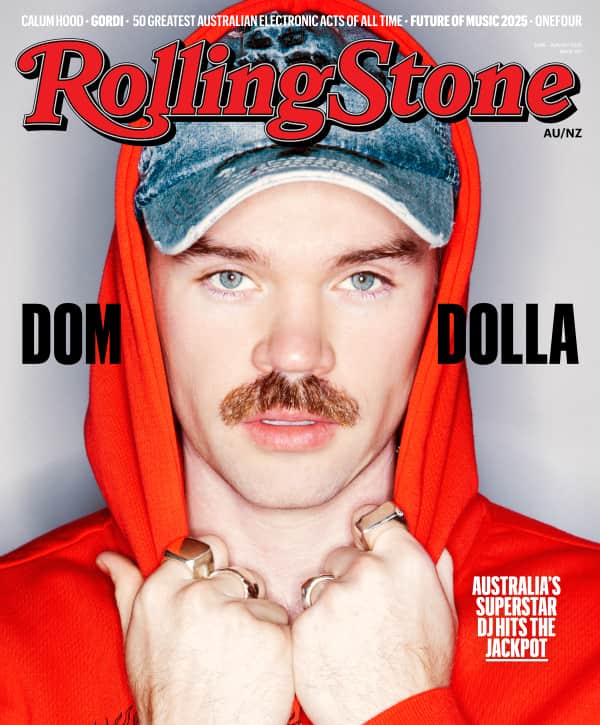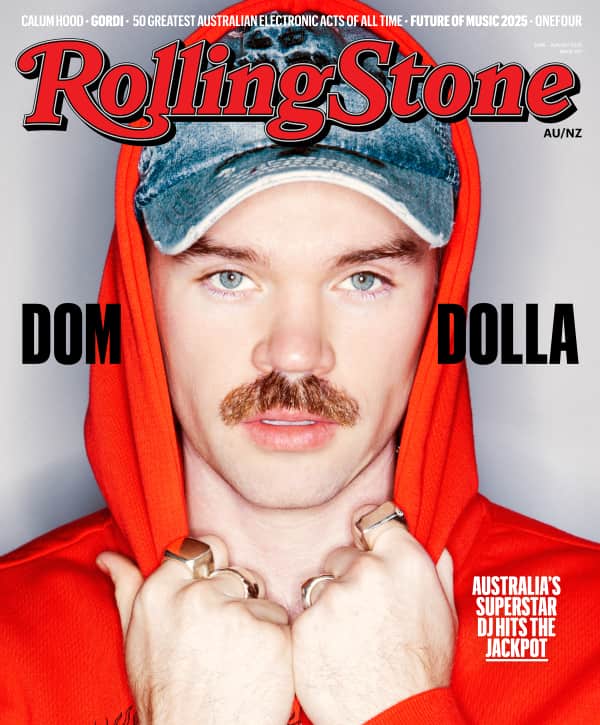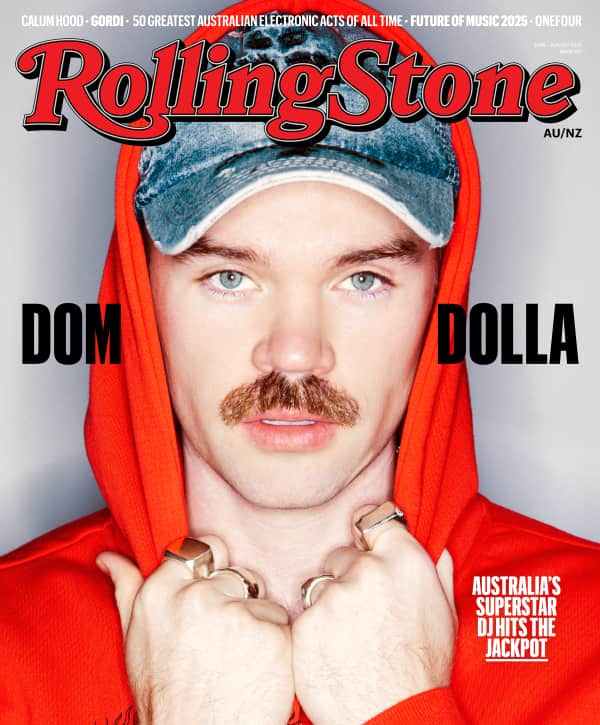You could make the argument that it’s all down to Talk to Me. But perhaps you shouldn’t.
The debut feature film from twin brothers Danny and Michael Philippou, still better known (for now, at least) for their YouTube videos under the name RackaRacka, was a massive hit, both in Australia and overseas, pulling in a whopping US$92.2 million at the global box office, including AU$2.2 million domestically. Not bad for a film budgeted at US$4.5 million.
Those are huge numbers, especially for a modestly budgeted genre flick from first time feature film makers, and even more so in a global market still reeling from the knock-on effects of Covid and an ongoing series of strikes and industrial actions. For a bit of context, Talk to Me stands as distributor A24’s fifth highest grossing film, knocking the Adam Sandler-starring Uncut Gems down to sixth place.
As ever, success breeds imitation — not necessarily creative imitation, mind you, but certainly in this case we’re looking at a slew of locally produced upcoming screen horror fare in various stages of production, all hoping to glean at least a fraction of Talk to Me’s take.
Jon Bell’s Indigenous horror film The Moogai, starring Shari Sebbens, played at the Sydney Film Festival, following a world premiere at the prestigious Sundance Film Festival. We Bury the Dead, a zombie film from These Final Hours and 1922 director Zak Hilditch and starring Daisy Ridley (Star Wars: The Force Awakens), Mark Coles Smith (Mystery Road), and Brenton Thwaites, just finished lensing in Albany, Western Australia. Another set of filmmaking brothers, Colin and Cameron Cairnes (100 Bloody Acres) earned a fantastic critical response with their retro found footage film, Late Night with the Devil, starring avowed horror fan David Dastmalchian. And as for the Brothers Philippou, they’re hard at work on their second feature, Bring Her Back, and a Talk to Me sequel, titled Talk 2 Me, has been greenlit.
“While the occasional smash hit is a rising tide that lifts all boats, as a genre, horror is a perennial.”
The general consensus is that horror is back, but it’s a consensus that exists outside of the genre. Talk to those who have skin in the game, and you get a different answer: while the occasional smash hit is a rising tide that lifts all boats, as a genre, horror is perennial.
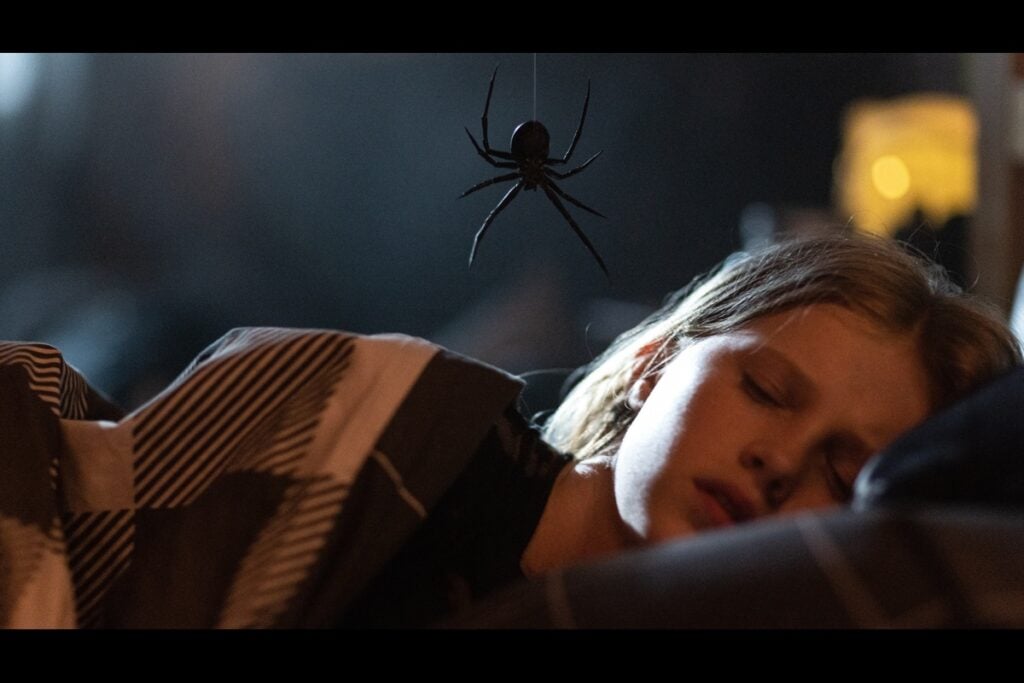
‘Sting’
Yet another sibling filmmaker (we have a surprising number of those), Kiah Roache-Turner, is part of the current wave, his monster spider movie Sting having been released in the States in April. With his producer brother, Tristan, Roache-Turner made his directorial debut with 2014’s Mad-Max-meets-zombies movie Wyrmwood: Road of the Dead. He’s currently prepping his next project, the World War II survival horror Beast of War, in which the survivors of a torpedoed troop carrier contend with a hungry great white shark, which is due to start principal production in Queensland later this year.
Love Music?
Get your daily dose of everything happening in Australian/New Zealand music and globally.
But while he acknowledges the buoyant effect Talk to Me’s success has had on the local genre — “We are 100% in an Aussie horror boom right now” — Roache-Turner notes that horror has never had much trouble finding an audience eager for gory thrills.
“It’s one of the few genres that is a guaranteed earner regardless of quality. People like to be scared, so there’s always an audience for that.” – Kiah Roache-Turner
“Horror always does well,” he tells us. “Obviously it becomes more evident when a culturally seismic movie is released, like The Exorcist or Jaws or Get Out, but it’s always there. It’s one of the few genres that is a guaranteed earner regardless of quality. People like to be scared, so there’s always an audience for that.”
For his part, Hilditch agrees. A native of Western Australia, Hilditch actually pivoted to horror with his breakthrough film, the apocalyptic These Final Hours (2013), and his subsequent films — Stephen King adaptation 1922 (2017), Netflix’s Rattlesnake (2019), and the upcoming We Bury the Dead, have all been firmly rooted in the genre.
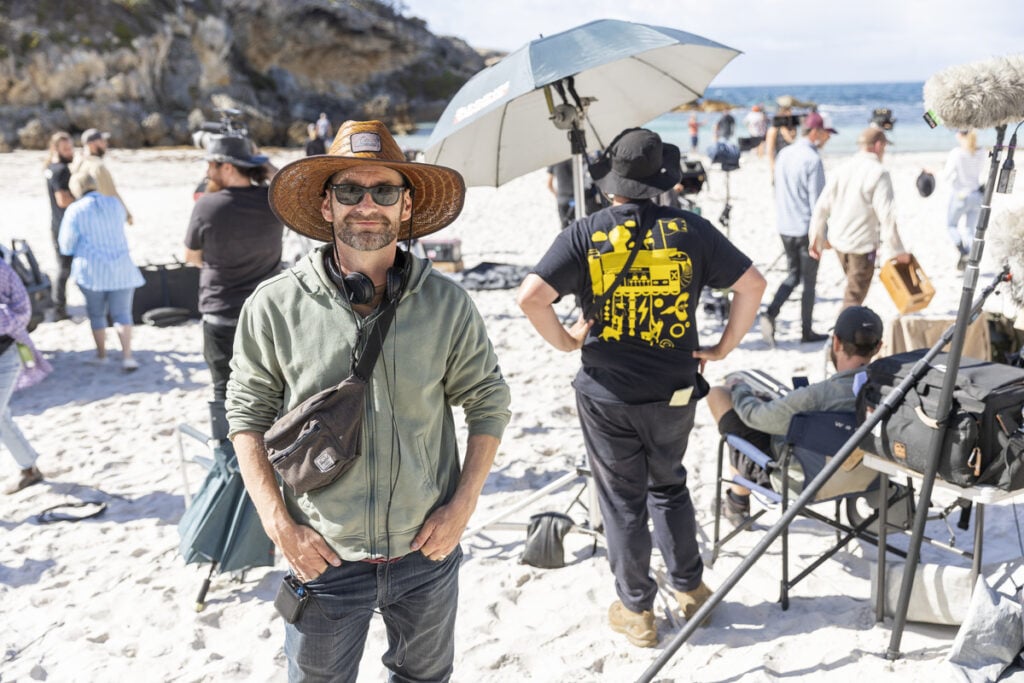
Zak Hilditch on the set of ‘We Bury the Dead’
However, prior to that, Hilditch’s first four features were micro-budget dramas that, regardless of quality, never got much box office play.
“I’ve written and developed a number of films over the last 20 years,” he explains. “And have come to discover the only ones that get the go ahead are the ones that have a genre hook running through its core. The same can be said for my latest film, We Bury the Dead. It’s fresh take on the zombie flick is what attracted interest from the very beginning.”
Speaking from a distributor’s perspective, Umbrella Entertainment’s Ari Harrison contends that the numbers speak for themselves. Founded in 2021, Umbrella spreads a wide net across genres, but horror has always been a key part of their offerings. As General Manager and Head of Sales & Acquisitions, Harrison keeps a close eye on the field.
He explains that horror has “always been healthy for Umbrella” across all markets, because the form itself is the hook.
“Unlike many other genres, the genre itself — horror — is the leading star. Horror audiences actively seek out the latest scares, kills and thrills — especially in the cinema with a group of friends. Whether it’s Talk to Me that hits the wider mainstream audience and zeitgeist or Terrifier 2 that had people vomiting in cinemas, it creates an event experience that pushes organic word of mouth, promotion and online activity.
“I don’t think friends get together and say, ‘Let’s watch a historical drama!’,” he laughs.
Still, it’s not necessarily as sunny down in the indie trenches, where the struggle for funding and distribution is both real and constant. Adelaide-based DIY filmmaker Dick Dale, who founded schlock short film festival Trasharama-A-Go-Go back in 1997, spent seven years making his debut opus, the gleefully gory and wilfully offensive Ribspreader, which finally premiered at the 2022 Adelaide Film Festival. From his angle, recent hits haven’t had much of an effect on ultra-low budget filmmaking.
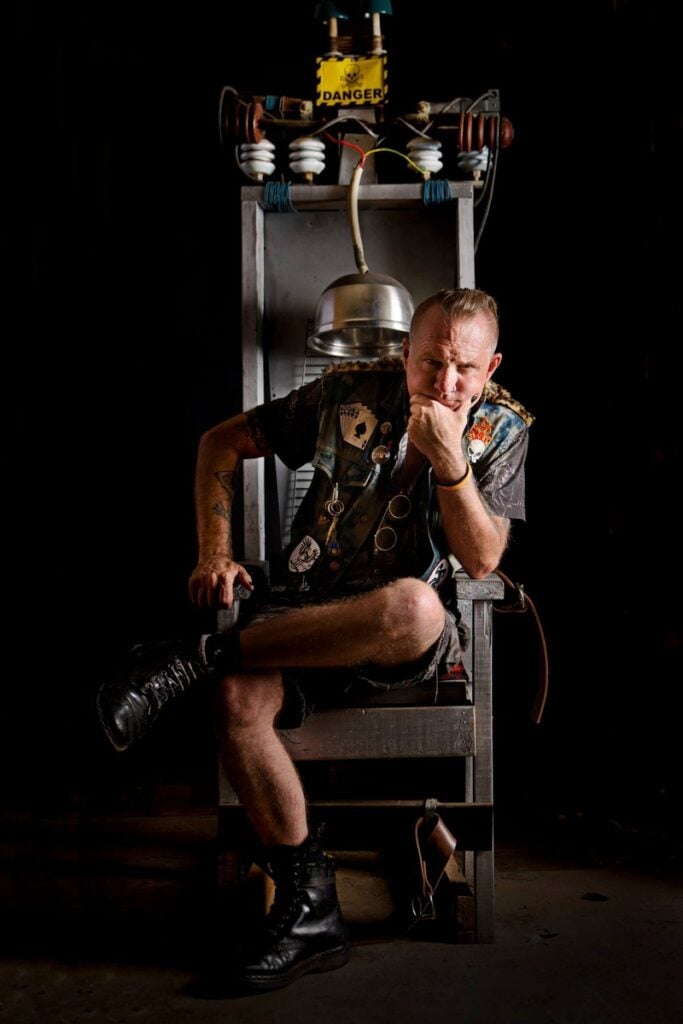
DIY filmmaker Dick Dale
“Whether horror is hot at the moment or not, I think [funding bodies] are still wary of taking a risk on anything original. It is still frowned upon.” – Dick Dale
“It is still an impossible struggle if you think you are getting finance from government funding bodies,” he says ruefully. “Mention that dirty word, ‘horror’, and you are sure to get kicked out of the party. No more free cheese and wine for you. Whether horror is hot at the moment or not, I think they are still wary of taking a risk on anything original. It is still frowned upon. Maybe it’s the rebel in me that draws me to these types of stories. As a fan, I really only want to create original and crazy movies I want to watch.”
Dale’s opinion seems to be a minority view here, but it’s worth noting that the occasional breakthrough hit doesn’t necessarily mean a win for filmmakers who trade in more outré and taboo subjects. Revelation Perth International Film Festival’s Jack Sargeant, an expert in the cinema of transgression, cautions against only paying attention to the big earners.
“In Australia there has been an independent horror scene for years,” he muses. “With its own screenings, audiences and filmmakers. Occasionally a work comes along and — maybe because it taps into the zeitgeist — it gets noticed and written about by critics and more people may see it at the cinema, but those filmmakers and films would be there anyway, it’s just that every now and again something gets noticed and people discuss it.”
Indeed, “horror is always here” is a common talking point. Harrison is happy to rattle off recent titles such as Godless, You’ll Never Find Me, Monolith, Sissy, and Relic, but also points to older classics like Road Games, The Babadook, and Wolf Creek as examples of the genre’s strong presence in Australian culture. Roache-Turner argues that “when it comes to cool, memorable genre films, I feel like Australia’s always held its own in more ways than one” and lauds Russell Mulcahey’s 1984 killer pig epic, Razorback. Look at the history of Australian film, and you’ll see a strong vein of horror running through the last 50-odd years: Patrick, Next of Kin, Long Weekend, Wake in Fright, Dark Age, and on and on.
It’s worth noting that Australia produced no horror movies prior to that, with the genre being effectively banned until 1968, and Canadian director Ted Kotcheff’s controversial and brilliant Wake in Fright (1971) is generally considered the first. But if it started a wave, it’s a wave that has yet to break. Grant Hardie, co-founder of the long-running genre film festival Monster Fest, avers that, even in the post-pandemic theatrical landscape, horror in general has thrived, perhaps more so than any other genre. The numbers, he says, add up.
“If you look at box office trends and take a very general gaze at it, it’s studio films and horror films that work in that environment because for both you have audiences who want to go into a cinema and watch. That’s what horror films do. They draw people to an audience because it’s that shared collective experience. If you look at what’s worked box office wise on an independent level, it’s consistently those indie horrors.”
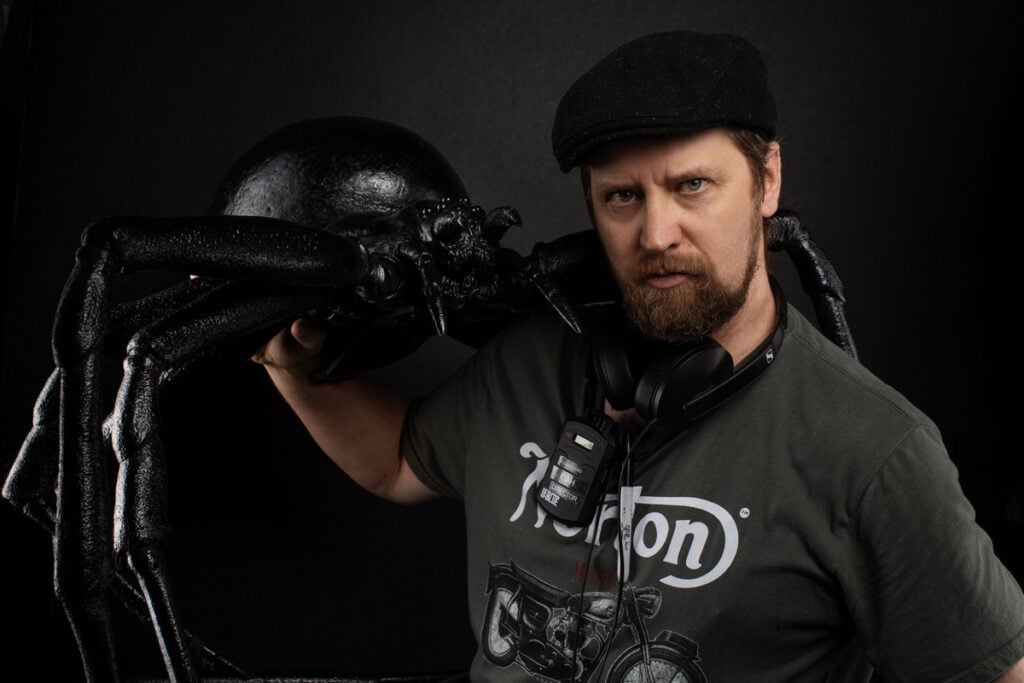
Director-Writer Kiah Roache-Turner
“The truth is our history is pretty dark and bloody and that finds its way into our art and our stories.” – Kiah Roache-Turner
But specifically Australian horror is its own weird thing, as Roache-Turner observes. “There’s something in our culture that makes us very attuned to violence and fear. It’s weird given that our reputation is that we’re these super easy-going folks who just like to drink beer and surf, but the truth is our history is pretty dark and bloody and that finds its way into our art and our stories.”
Perhaps that’s a disturbing notion, but Australian horror is certainly having A Moment, both at home and overseas. Having recently returned from the Cannes Film Festival, Hardie was impressed with the sheer number of Australian horror projects currently being shopped around.
“There was a bunch of Australian horror films that were pitched into the market there that got a really good reaction, and I know there’s a bunch of stuff in development and production. I think the next five years will be looked back on as a bit of a golden age.”
This article features in the September-November 2024 issue of Rolling Stone AU/NZ.
Whether you’re a fan of music, you’re a supporter of the local music scene, or you enjoy the thrill of print and long form journalism, then Rolling Stone AU/NZ is exactly what you need. Click the link below for more information regarding a magazine subscription.




















